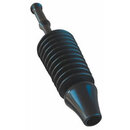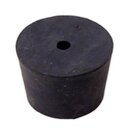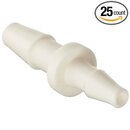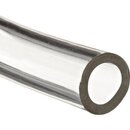Bubbletrubble
Contributor
Even with drysuit dives where I need to descend quickly, I do them all essentially the same. I weight myself to be negative by the weight of my gas at the start of the dive. I mention this because some people choose to weight themselves slightly differently. After donning the drysuit during pre-dive prep, I always scrunch down into a ball and vent through the exhaust valve. This ensures that the exhaust valve is working properly, which is something that can be missed if you burp exclusively through the neck seal.
Once in the water at the descent point, I exhaust the air from the BCD and exhale sharply. This immediately causes me to descend in a head-up/feet-down vertical position. As soon as my head gets below the surface of the water, I rotate into a horizontal position. Shortly thereafter, I find myself adding air to my drysuit to offset squeeze and slow down my descent. I prefer to maintain a horizontal position during all phases of the dive because it helps distribute the bubble inside the suit better. I find that I can descend very quickly (pretty much as fast as I can equalize my ears) in a horizontal position. Personally, I dislike head-first descents in a drysuit. YMMV.
(FYI, I'm a single tank OW recreational diver, and this method of managing the initial descent in a drysuit works very well for me. People with other gear configurations, e.g., diving doubles, might find that other techniques work better for them.)
Once in the water at the descent point, I exhaust the air from the BCD and exhale sharply. This immediately causes me to descend in a head-up/feet-down vertical position. As soon as my head gets below the surface of the water, I rotate into a horizontal position. Shortly thereafter, I find myself adding air to my drysuit to offset squeeze and slow down my descent. I prefer to maintain a horizontal position during all phases of the dive because it helps distribute the bubble inside the suit better. I find that I can descend very quickly (pretty much as fast as I can equalize my ears) in a horizontal position. Personally, I dislike head-first descents in a drysuit. YMMV.
(FYI, I'm a single tank OW recreational diver, and this method of managing the initial descent in a drysuit works very well for me. People with other gear configurations, e.g., diving doubles, might find that other techniques work better for them.)







